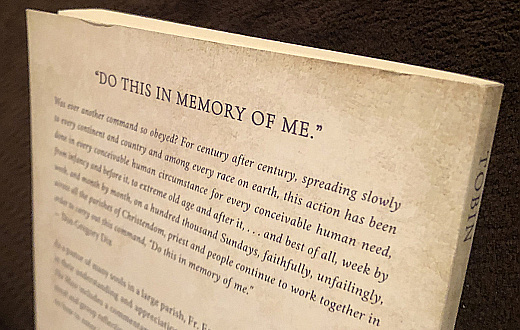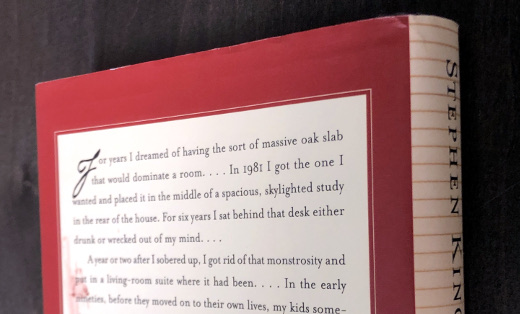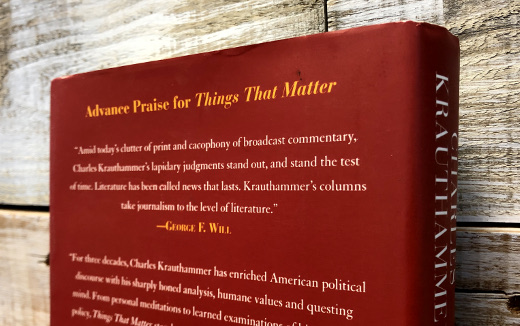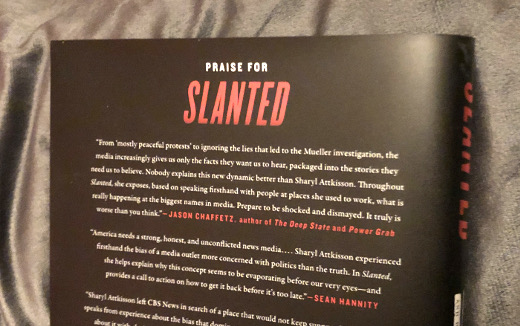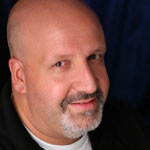My Takeaways From The Book Dunkirk
For years I was familiar with what I remember as the “battle” of Dunkirk. Memories recall a battle and evacuation from the French city during World War II. To be completely honest, the main reason why I remember this at all is because I was born in Dunkirk, New York, which gets its name from the French city. An opportunity to truly learn what happened then and there would complete this connection.
Receiving the book Dunkirk: The History Behind the Major Motion Picture as a gift was very much welcome. A few pages into it I quickly learned this was not a book based on the movie, rather the story of what happened in Dunkirk, France in 1940 that was the basis for the movie. The author, Joshua Levine, was a historical advisor to the movie Dunkirk which was written and directed by Christopher Nolan and came out in 2017.
As you might guess, this book widened my eyes to the real story of what happened in Dunkirk and other related fronts of the war in Europe. Featured were many stories of what really was a rescue of thousands of British and some French troops from the beaches of Dunkirk. Where greater context of the overall state of the war was presented, the focus of this book – as well as the movie – is what happened on the ground in and around Dunkirk.
Where there are many lessons to be learned in wartime, I had a few specific takeaways from this book and the story it told.
Last Chance at First-Hand Accounts – The book was written about 5 years ago, just before 80th anniversary of the rescue at Dunkirk. Fortunately there were still some surviving soldiers and participants in the rescue effort alive who were able to tell their story. This added greatly to the stark reality of the war and the enormity of the rescue effort.
Newly Invented Degaussing Aided The Rescue – Degaussing is the process of removing a magnetic field, and is often referred to as demagnetizing or wiping. It was a relatively new process that came out of research during World War II, and played a great role in the rescue. Hundreds of ships were degaussed in order to reduce the chance of magnetic mines being drawn to them and blowing them up.
The Term “Dunkirk Spirit” Is Still Used Today – The term Dunkirk Spirit came from the effort of many to rally around the cause of rescuing the soldiers from the shores of the French city. I occasionally see the phrase in use today in reference to any collective of people rallying around a cause. It’s good to see that even today some good comes from the tragedy of war that led to the need for the rescue.
Dunkirk is a very well-written and engaging story on the rescue. At some points it is hard to follow all of the soldiers and military leaders, but I tried not to focus on individuals instead on the monstrous rescue effort. The book concludes with backstory on the production of the movie itself, from Nolan’s script and creation of characters and the challenges of recreating the rescue scenes. With an eye towards authenticity over computer-generated imagery, the level of effort to recreate some scenes was near equal to was done during the rescue itself. One such example was to create a “pier” out of military vehicles, which included sinking them into the water so soldiers could pass over them.
If you enjoy history or simply like stories of overcoming the odds, I highly recommend Dunkirk: The History Behind the Major Motion Picture. As I pass along all books I read, this one goes to my Father-in-law, a military veteran himself, who also enjoys such stories.
This is from The Hot Iron, a journal on business and technology by Mike Maddaloni.
Did you enjoy this? Subscribe to The Hot Iron by RSS/XML feed or Read by Email
Book Take-Aways • (0) Comments • PermalinkMy Takeaways From A Simple Explanation of the Mass
Have you ever done something repeatedly and it gets to the point that you do it without putting too much thought into it? This was the thinking I had when I picked up a copy of the book A Simple Explanation of the Mass at the end of a Mass I attended at my Catholic church.
As someone who embraces the term “practicing Catholic,” I certainly don’t pretend to be a religious scholar. That being said, I went through traditional religious education (aka CCD) as a youth, and I should already know everything in this book, right?
As I read through this short yet encompassing book, I had a few takeaways.
Reminded of the Smaller Details – From the origins of some prayers to some of the things the priest says in the course of the Mass that the congregation may not hear, there were several reminders or refreshers on some of the things that are important in a Mass but can be easily overlooked.
More than a Commentary – The subtitle of this book, by Catholic priest Fr. Eamon Tobin, is “A Step-by-Step Commentary on Each Part of the Mass and The Seasons of the Liturgical Year.” Where there is some opinion throughout the book, I say this is more of an explanation and guide to the Catholic Mass. Sports books I have read and shared takeaways from here at The Hot Iron tend to be more commentary than this work.
A Good Explanation and Guide – I was pleased with the format and flow of the book, first walking through the elements of the Mass from beginning to end, then the liturgical calendar for the Catholic Church. Where I of course learned all of this over my many years, I don’t recall it in such a well-structured format.
Whether you’re a Christmas and Easter Catholic or someone who is there every Sunday – or someplace in between as I am – you will find A Simple Explanation of the Mass a good read and refresher of what you, like me, may be taking for granted. As I pass along all books I read, I am going to drop this off in a new Little Free Library that is in my neighborhood. Perhaps this will shed some enlightenment on someone as it did for me.
This is from The Hot Iron, a journal on business and technology by Mike Maddaloni.
Did you enjoy this? Subscribe to The Hot Iron by RSS/XML feed or Read by Email
Book Take-Aways • (2) Comments • PermalinkMy Takeaways From On Writing
When I started blogging over 14 years ago, the last thing I thought would come of this endeavor was a strong interest in writing. Call it serendipity, call it colleterial damage, but in a process led by technology then, that very technology has become secondary today. This being said, I have much, much more to learn about the art and craft of writing.
Reading On Writing by Stephen King was also serendipitous. Last summer while on vacation my family stopped at a yard sale as they had kayaks for sale. After learning the prices of said kayaks were more in tune with a Christies auction than stuff piled on an out-of-the-way driveway in the Northwoods of Wisconsin, I found a used copy of the book at the whopping price of 50 cents. As you will read on, this find made the stop worthwhile.
On Writing is part biography, part motivational speech and part textbook from the master of horror and suspense. It chronicles his life story to where he was when it came out 20 years ago – note there have been subsequent updated editions of this since then, however what I read was the original. In addition to the craft of writing, it also tells the tales of the trappings of the industry, including rejection, publishing and how you make a living leading up to publishing.
There were many takeaways from On Writing that I scribbled down as I read through it, what follows is the top, most meaningful of them to me.
The best of the advice he received – There are many pieces of advice that King got over the years that he recalls in the book. My favorite was advice he got from a newspaper editor, "When you write a story, you're telling yourself the story... when you rewrite, your main job is taking out all the things that are not the story.
“Write with the door closed, rewrite with the door open” – Building on the advice he received, this really resonated with me. I have always felt that editing was just as equally important if not more so in some cases. To this extent, there is an example in the book of something he wrote, and then edited by hand, showing all of his hand marks.
“Don’t develop plot, let it happen” – As I am writing this post this rings so true, as the results of even this very sentence were not what I thought I would have written. Many times I go into writing something after already writing it in my head. Even then, as I put pen to paper or fingers to keyboard, the results aren’t always as planned.
“Write one word at a time” – When you look at it that way, it makes writer’s block almost seem silly.
King spent time in West De Pere, Wisconsin – As a child, King lived in a city just about 20 minutes north of where I am now. It’s nice to see I am not the only Red Sox fan who has lived in this area.
This is my first Stephen King book – For all I knew about Stephen King and have seen many of his movies, I have never read one of his books before. As that has now changed, I think I will mix up my reading stack for the year with one of his novels, perhaps The Running Man.
On Writing was a great read for me, as it was an honest look at a man who has been insanely successful at writing, and as humble as the person who could be sitting next to me in bleachers at Fenway Park on a summer afternoon. If you are interested in writing or simply want to learn more about the man behind Carrie White, I recommend On Writing. As with all books I read, the destination of its giveaway was to a friend who has the audio book of On Writing – narrated by King himself – who I thought might like to see his words on paper as well.
This is from The Hot Iron, a journal on business and technology by Mike Maddaloni.
Did you enjoy this? Subscribe to The Hot Iron by RSS/XML feed or Read by Email
Book Take-Aways • (0) Comments • PermalinkMy Takeaways From Things That Matter
A dear friend once suggested I write a book consisting of blog posts I have written here at The Hot Iron. My response to her, through a dismissively scrunched face, was “who would want to read past things I wrote?” After reading Things That Matter by Charles Krauthammer, I am rethinking that knee-jerk reaction.
Krauthammer was an award-winning columnist, following years as a policy advisor following years as a doctor. When I saw him occasionally as an analyst on various cable news talk shows I had no idea of any of this. As I enjoyed his commentary on TV, I presumed I would enjoy this book, not to mention taking away a few things from it. In this case my reaction was spot-on.
A good look back on history thru a unique lens – In addition to his journey from medicine to writing, Krauthammer was an American who lived in Canada in his youth. His writing style was smart yet educating with a wry sense of humor, and it was clear to anyone reading it of his conservative stance. Even if you didn’t agree with him, he wrote in a way that you would still want to hear what he had to say. This combination of background and style made for the unique pieces curated in this book.
Peace in The Devil's Dictionary – In one article Krauthammer referred the definition of “peace” in The Devil’s Dictionary. I had never heard of the Devil’s Dictionary and wasn’t aware of this satirical book of definitions for common terms. In this case, peace is defined as, “in international affairs, a period of cheating between two periods of fighting.”
More writers should do this – Clearly this book has got me thinking of re-evaluating doing this myself, despite the antithesis of my notoriety as compared to Charles Krauthammer. As well there are many columnists out there who should also do this... and I am looking at you Heidi Stevens!
Things That Matter is not solely a political book, as it talks of life, culture, sports, chess and, yes, politics covering several decades of his columns. I enjoyed his thoughtful writing that presented a perspective of a time when I was much younger and didn’t fully know all going on in the world.
If you are interested in a historical look at world events from the time they occurred I highly recommend Things That Matter. I was given this book several years ago before Krauthammer died and I finally got to reading it now. I passed this book along to my wife who also enjoyed him on TV and my guess is she’ll enjoy his writings as well. Perhaps you can get the book from her when she is done with it, or click any link here to buy a copy of your own – if you do I will earn a few pennies from your purchase.
This is from The Hot Iron, a journal on business and technology by Mike Maddaloni.
Did you enjoy this? Subscribe to The Hot Iron by RSS/XML feed or Read by Email
Book Take-Aways • (0) Comments • PermalinkMy Takeaways From Slanted By Sharyl Attkisson
As Frida said best, I know there’s something going on. Personally I want to know what that is – the who, what, where, when, why and how and all sides of a story. If there’s an opinion about it to be made, it will be created in my own mind.
Call me old fashioned, but that’s the way the news was like when I grew up; I liked it then, and I still do now. However today and for many preceding years, the news has been nothing like how it was. Stocked with thin, incomplete coverage and opinion coming from talking heads in boxes on a screen – that’s not news to me.
As the saying goes, misery loves company, and after reading Slanted by Sharyl Attkisson, I realized I was in very good company. Attkisson is an award-winning investigative journalist and has worked for CNN and CBS in the past and is the host of the weekly news program Full Measure. Slanted chronicles the devolution of mainstream media news from the major TV networks and cable channels. Where their news reporting was once revered, it has become a shell of what it was, and biased or slanted towards a certain side or stakeholder in a news story.
With a strong desire to go back to the days when news was news, I certainly had takeaways from reading Slanted.
It’s not just me – Slanted presented thoughtful analysis of what I observe when I do watch or read the news. Often I am left head-shaking when I consume a news story, wondering why I feel like what I just read or saw was not the whole story, or if a perceived bias was correct or not.
Let’s all play the Substitution Game! – Attkisson uses a technique called the Substitution Game, where she will take a story that is biased towards one party – political or not – and substitute one side’s name for the other, typically in a story against one of those parties. Almost instantly a lightbulb will go off over my head realizing how absurd or incredulous a story appears when that’s done.
Who said there’s no money in objective journalism? – I am willing to pay for it, and am not willing to pay for bad, biased journalism, let alone consume it. This is part of the reason why we haven’t had cable TV in my household for years.
As much as I enjoyed Slanted, it’s unfortunate such a book had to be written. It provides great context and insights from others who work in news media. I enjoyed the interview Attkisson had with Lou Waters, with whom she co-anchored on CNN back in the 1990’s. Where Waters is named, many of the other interview subjects and not, and my guess was to protect their identities as they likely still work in mainstream news. Had more of them come forward that would have provided even more credibility to the state of news, but I can understand why.
If you are curious as to what may be going on behind the story in news coverage, I highly recommend reading Slanted. I purchased my copy, actually pre-ordering it when it was announced back last April. I have in the past purchased and wrote takeaways on Attkisson’s other books – Stonewalled and The Smear. As I give away all books I read, this one is going to a colleague whom I had a recent conversation with on the news and feels similarly to me on today’s reporting. You can always get your own copy with one of the links in this post, and note that if you do click and buy, I earn a few cents.
This is from The Hot Iron, a journal on business and technology by Mike Maddaloni.
Did you enjoy this? Subscribe to The Hot Iron by RSS/XML feed or Read by Email
Book Take-Aways • (0) Comments • Permalink

